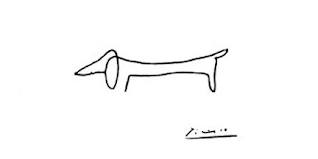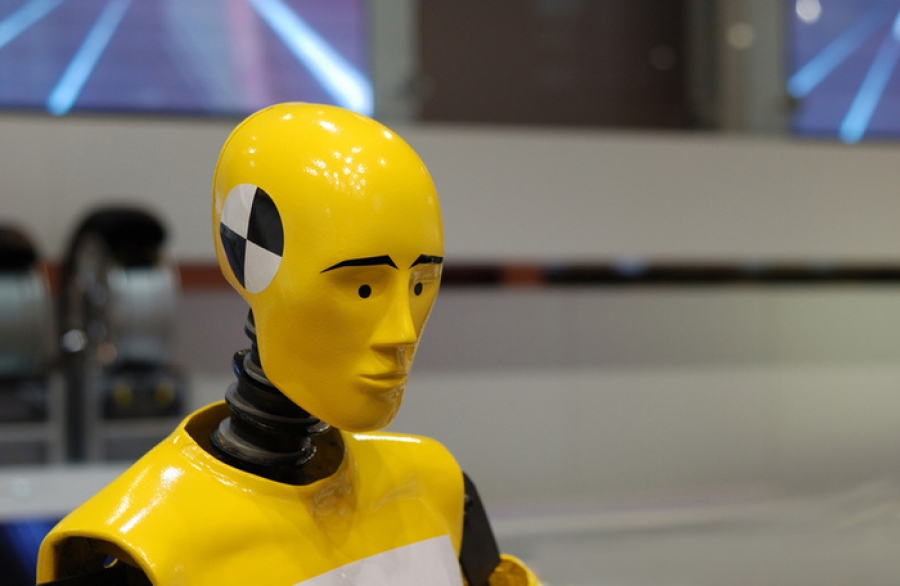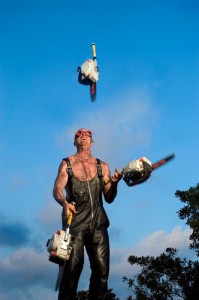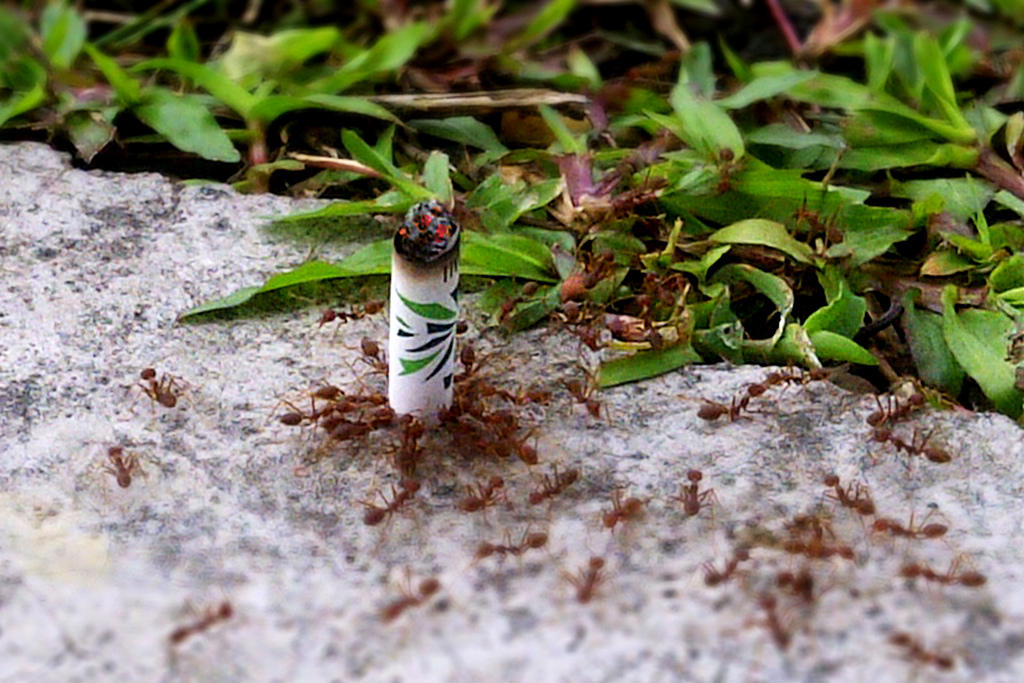Archive for the ‘New Normal’ Category
How do you choose what to work on?
 There are always too many things to do, too much to work on. And because of this, we must choose. Some have more choice than others, but we all have choice. And to choose, there are several lenses we look through.
There are always too many things to do, too much to work on. And because of this, we must choose. Some have more choice than others, but we all have choice. And to choose, there are several lenses we look through.
What’s good enough? If it’s good enough, there’s no need to work on it. “Good enough” means it’s not a constraint; it’s not in the way of where you want to go.
What’s not good enough? If it’s not good enough, it’s important to work on it. “Not good enough” means it IS a constraint; it IS in the way; it’s blocking your destination.
What’s not happening? If it’s not happening and the vacancy is blocking you from your destination, work on it. Implicit in the three lenses is the assumption of an idealized future state, a well-defined endpoint.
It’s the known endpoint that’s used to judge if there’s a blocking constraint or something missing. And there are two schools of thought on idealized future states – the systems, environment, competition, and interactions are well understood and idealized future states are the way to go, or things are too complex to predict how things will go. If you’re a member of the idealized-future-state-is-the-way-to-go camp, you’re home free – just use your best judgment to choose the most important constraints and hit them hard. If you’re a believer in complexity and its power to scuttle your predictions, things are a bit more nuanced.
Where the future state folks look through the eyepiece of the telescope toward the chosen nebula, the complexity folks look through the other end of the telescope toward the atomic structure of where things are right now. Complexity thinkers think it’s best to understand where you are, how you got there, and the mindset that guided your journey. With that knowledge you can rough out the evolutionary potential of the future and use that to decide what to work on.
If you got here by holding on to what you had, it’s pretty clear you should try to do more of that, unless, of course, the rules have changed. And to figure out if the rules have changed? Well, you should run small experiments to test if the same rules apply in the same way. Then, do more of what worked and less of what didn’t. And if nothing works even on a small scale, you don’t have anything to hold onto and it’s time to try something altogether new.
If you got here with the hybrid approach – by holding on to what you had complimented with a healthy dose of doing new stuff (innovation), it’s clear you should try to do more of that, unless, of course, you’re trying to expand into new markets which have different needs, different customers, and different pocketbooks. To figure out what will work, runs small experiments, and do more of what worked and less of what didn’t. If nothing works, your next round of small experiments should be radically different. And again, more of what worked, less of what didn’t.
And if you’re a young company and have yet to arrive, you’re already running small experiments to see what will work, so keep going.
There’s a half-life to the things that got us here, and it’s difficult to predict their decay. That’s why it’s best to take small bets on a number of new fronts – small investment, broad investigation of markets, and fast learning. And there’s value in setting a rough course heading into the future, as long as we realize this type of celestial navigation must be informed by regular sextant sightings and course corrections they inform.
Image credit – Hubble Heritage.
The Safest Bet Is Far Too Risky
 It’s harder than ever to innovate, and getting harder.
It’s harder than ever to innovate, and getting harder.
The focus on growth can be empowering, but when coupled with signed-in-blood accountability, empowering turns to puckering. It’s an unfair double-bind. Damned if you try something new and it doesn’t work, and damned if you stay the course and don’t hit the numbers. The most popular approach seems to be to do more of what worked. A good approach, but not as good as it’s made out to be.
Doing more of what worked is good, and it works. But it can’t stand on its own. With today’s unreasonable workloads, every resource is fully booked and before doing more of anything, you’ve got to do less of something else. ‘More of what worked’ must walk hand-in-hand with ‘Stop what didn’t work.’ Without stopping, without freeing up resources, ‘more of what worked’ is insufficient and unsustainable.
But even the two together are insufficient, and there’s a much needed third leg to stabilize the stool – ‘starting new work.’ Resources freed by stopping are allocated to starting new work, and this work, also known as innovation, is the major source of growth.
‘More of what worked’ is all about productivity – doing more with the same resources; and so is ‘stopping what didn’t work’ – reclaiming and reallocating ineffective resources. Both are important, but more importantly – they’re not innovation.
As you’re well aware, the rules are changing faster than ever, and at some point what worked last year won’t work this year. The only way to stay ahead of a catastrophe is to make small bets in unproven areas. If the bets are successful, they turn into profitable innovation and growth. But the real value is the resiliency that comes from the ritualistic testing/learning cycles.
Going all-in on what worked last year is one of the riskiest bets you can make.
An Injection Of Absurdity
Things are cyclic, but there seems to be no end to the crusade of continuous improvement. (Does anyone remember how the Crusades turned out?) If only to take the edge off, there needs to be an injection of absurdity.
There’s no pressure with absurdity – no one expects an absurd idea to work. If you ask for an innovative idea, you’ll likely get no response because there’s pressure from the expectation the innovative idea must be successful. And if you do get a response, you’ll likely get served a plain burrito of incremental improvement garnished with sour cream and guacamole to trick your eye and doused in hot sauce to trick your palate. If you ask for an absurd idea, you get laughter and something you’ve never heard before.
When drowning in the sea of standard work, it takes powerful mojo to save your soul. And the absurdity jetpack is the only thing I know with enough go to launch yourself to the uncharted oasis of new thinking. Immense force is needed because continuous improvement has serious mass – black hole mass. Like with light, a new idea gets pulled over the event horizon into the darkness of incremental thinking. But absurdity doesn’t care. It’s so far from the center lean’s pull is no match.
But to understand absurdity’s superpower is to understand what makes things absurd. Things are declared absurd when they cut against the grain of our success. It’s too scary to look into the bright sun of our experiences, so instead of questioning their validity and applicability, the idea is deemed absurd. But what if the rules have changed and the fundamentals of last year’s success no longer apply? What if the absurd idea actually fits with the new normal? In a strange Copernican switch, holding onto to what worked becomes absurd.
Absurd ideas sometimes don’t pan out. But sometimes they do. When someone laughs at your idea, take note – you may be on to something. Consider the laughter an artifact of misunderstanding, and consider the misunderstanding a leading indicator of the opportunity to reset customer expectations. And if someone calls your idea absurd, give them a big hug of thanks, and get busy figuring out how to build a new business around it.
Drag Racing Behavior
 Our productivity-by-the-minute culture is killing us.
Our productivity-by-the-minute culture is killing us.
In business speed is king, and with it comes our short-sighted drag racing behavior. As we pull to the starting light our big engines shake and rumble, our pipes shoot flames, and our tires smoke. We stomp the throttle, accelerate to mach 1, kill the engine, and throw the chute. A quarter mile covered in record time, and champagne celebration.
But, because the pace was beyond sustainable, we can’t race again until the damage is repaired. Because it ran too hot the pit crew must pull the engine, because the torque was so outrageous the transmission must be swapped, and because the vibrations were so severe the frame must be checked for metal fatigue. But this is just another opportunity for more racing.
We externalize the setup, design the process for quick changeover, reduce waste, and focus on the vital few. No matter the pit crew doesn’t get sleep, or their families miss them. Engine swapped in record time, and obligatory celebration.
Sure, going fast is good. But business can’t be a series of back-to-back sprints. Plain and simple – people cannot sprint every day, all day. Business should be thought of as a marathon. A marathon run at a respectable pace, but a pace we’ve trained for, a pace we can sustain. With a torn hamstring the fastest sprinter makes no forward progress, and even the slowest marathoner is faster.
Sprint, yes, but only when it makes sense. Sprint, yes, but provide recovery time. Sprint, yes, but not if it will do personal harm.
Increasing speed is directionally correct, but our time horizon is too short. Instead of optimizing over a six second quarter mile, we should optimize for a marathon.
In our chase for speed’s euphoric high, our drug of choice is efficiency. Like speed, efficiency is good. But, just as speed’s time horizon is too short, efficiency’s scale of optimization is too small. We optimize locally and the net result is global sub-optimization. This is clearly an artifact of what we measure. Clearly, we must measure differently.
Every day we chase the dopamine high of efficiency, but ignore the mind-blowing power of effectiveness. If you sprint day after day, you may be efficient, but you’re definitely ineffective. Sprint every day for a month, sleep four hours a night, and spend six weeks away from your family. Are you really in a good position to make a make-or-break decision? How can you possibly be effective? I wish Finance knew how to measure effectiveness as well as it does efficiency.
As a company leader, stop sprinting. As a company leader, stop optimizing locally. As a company leader, stop focusing on efficiency. As a company leader, demonstrate and reward effectiveness. As a company leader, go home and spend time with your family.
Less-With-Far-Less for the Developing World
 The stalled world economy will make growth difficult, and companies are digging in for the long haul, getting ready to do more of what they do best – add more function and features, sell more into existing markets, and sell more to existing customers. More of the same, but better. But growth will not come easy with more-on-more thinking. It will be more-on-more trench warfare – ugly hand-to-hand combat with little ground gained. It’s time for another way. It’s time for less. It’s time to create new markets with less-with-far-less thinking.
The stalled world economy will make growth difficult, and companies are digging in for the long haul, getting ready to do more of what they do best – add more function and features, sell more into existing markets, and sell more to existing customers. More of the same, but better. But growth will not come easy with more-on-more thinking. It will be more-on-more trench warfare – ugly hand-to-hand combat with little ground gained. It’s time for another way. It’s time for less. It’s time to create new markets with less-with-far-less thinking.
Real growth will come from markets and consumers that don’t exist. Real (and big) growth will come from the developing world. They’re not buying now, but they will. They will when product are developed that fit them. But here’s the kicker – products for the developed world cannot be twisted and tweaked to fit. Your products must be re-imagined.
The fundamentals are different in the developing world. Three important ones are – ability to pay, population density, and literacy/skill.
The most important fundamental is the developing world’s ability to pay. They will buy, but to buy products must cost 10 to 100 times less. (No typo here – 10 to 100 times less.) Traditional cost reduction approaches such as Design for Manufacturing and Assembly (DFMA) won’t cut it – their 50% cost reductions are not even close. Reinvention is needed; radical innovation is needed; fundamental innovation is needed. Less-with-far-less thinking is needed.
To achieve 10-100X cost reductions, the product must do less and do it far more efficiency (with far less). Product functionality must be decimated – ripped off the bone until only bone remains. The product must do only one thing. Not two – one. The product must be stripped to its essence, and new technology must be developed to radically improve efficiency of delivering its essence. Products for the developing world will require higher levels of technology than products for the developed world.
Radical narrowing of functionality will make viable the smaller, immature, more efficient technologies. Infant technologies usually have lower output and less breadth, but that’s just what’s needed – narrow, deep, and less. Less-with-far-less.
In the developing world, population density is low. People are spread out, and rural is the norm. And it’s not developed world rural, it’s three-day-hike rural. In the developing world, people don’t go to products; products go to people. If it’s not portable, it won’t sell. And developing world portable does not mean wheels – it means backpack. Your products must fit in a backpack and must be light enough to carry in one.
Big, stationary, expensive equipment is not exempt. It also must fit in a backpack. And this cannot be achieved with twist-and-bend engineering. To fit in a backpack, the product must be stripped naked and new technology must be developed to radically improve efficiency. This requires radical narrowing, radical reimagining, and radical innovation. It requires less-with-far-less thinking. (And if it doesn’t run on batteries, it should at least have battery backup to deal with rolling blackouts.)
People in the developing world are intelligent, but most cannot read well and have little experience with developed world products. Where the developed world’s solution is picture-based installation instructions, less-with-far-less products for the developing world demand no instructions. For the developing world, the instruction manual is the on button. And this requires serious technology – software algorithms fed by low cost sensors. And the only way it’s possible is by distilling the product to its essence. Algorithms, yes, but algorithms to do only one thing very well. Less-with-far-less.
The developed world makes products with output that requires judgment – multi-colored graphical output that lets the user decide if things went well. Products for the developing world must have binary output – red/green, beep/no-beep. Less-with-far-less. But again, this seemingly lower-level functionality (a green light versus a digital display) actually requires more technology. The product must interpret results and decide if it’s good – much harder than a sexy graphical output that requires interpretation and judgement.
Creating products for the developing world requires different thinking. Instead of adding more functions and features, it’s about creating new technologies that do one thing very well (and nothing more) and do it with super efficiency. Products for the developing world require higher technologies than those for the developed world. And done well, the developed world will buy them. But the crazy thing is, the less-with-far-less products that will be a hit in the developing world will boomerang back and be an even bigger hit in the developed world.
How To Accelerate Engineers Into Social Media
 Engineers fear social media, but shouldn’t. Our fear comes from lack of knowledge around information flow. Because we don’t understand how information flow works, we stay away. But our fear is misplaced – with social media information flow is controllable.
Engineers fear social media, but shouldn’t. Our fear comes from lack of knowledge around information flow. Because we don’t understand how information flow works, we stay away. But our fear is misplaced – with social media information flow is controllable.
For engineers, one-way communication is the best way to start. Engineers should turn on the information tap and let information flow to them. Let the learning begin.
At first, stay away from FaceBook – it’s the most social (non-work feel), least structured, and most difficult to understand – at least to me.
To start, I suggest LinkedIn – it’s the least social (most work-like) and highly controllable. It’s simple to start – create an account, populate your “resume stuff” (as little as you like) and add some connections (people you know and trust). You now have a professional network who can see your resume stuff and they can see yours. But no one else can, unless you let them. Now the fun part – find and join a working group in your interest area. A working group is group of like-minded people who create work-related discussions on a specific topic. Mine is called Systematic DFMA Deployment. You can search for a group, join (some require permission from the organizer), and start reading the discussions. The focused nature of the groups is comforting and you can read discussions without sharing any personal information. To start two-way communication, you can comment on a discussion.
After LinkedIn, engineers should try Twitter. Tweets (sounds funny, doesn’t it?) are sentences (text only) that are limited to 140 characters. With Twitter, one-way communication is the way to start – no need to share information. Just create an account and you’re ready to learn. With LinkedIn it’s about working groups, and with Twitter it’s about hashtags (#). Hashtags create focus with Twitter and make it searchable. For example, if the tweet creator uses #DFMA in the sentences, you can find it. Search for #DFMA and you’ll find tweets (sub-140 character sentences) related to design for manufacturing and assembly. When you find a hashtag of interest, monitor those tweets. (You can automate hashtag searches – HootSuite – but that’s for later). And when you find someone who consistently creates great content, you can follow them. Once followed, all their tweets are sent to your Twitter account (Twitter feed). To start two-way communication you can retweet (resend a tweet you like), send a direct message to someone (like a short email), or create your own tweet.
Twitter’s format comforts me – short, dense bursts of sentences and no more. Long tweets are not possible. But a tweet can contain a link to a website which points to a specific page on the web. To me it’s a great combination – short sentences that precisely point to the web.
With engineers and social media, the goal is to converge on collaboration. Ultimately, engineers move from one-way communication to two-way communication, and then to collaboration. Collaboration on LinkedIn and Twitter allows engineers to learn from (and interact with) the world’s best subject matter experts. Let me say that again – with LinkedIn and Twitter, engineers get the latest technical data, analyses, and tools from the best people in the world. And it’s all for free.
For engineers, social and media are the wrong words. For engineers, the right words are – controlled, focused, work-related information flow. And when engineers get comfortable with information flow, they’ll converge on collaboration. And with collaboration, engineers will learn from each other, help each other, innovate and, even, create personal relationships with each other.
Companies still look at social media as a waste of work time, and that’s especially true when it comes to their engineers. But that’s old thinking. More bluntly, that’s dangerous thinking. When their engineers use social media, companies will develop better products and technologies and commercialize them faster.
Plain and simple, companies that accelerate their engineers into social media will win.
Stop Doing – it will double your productivity
 For the foreseeable future, there will be more work than time. Yet year-on-year we’re asked to get more done and year-on-year we pull it off. Most are already at our maximum hour threshold, so more hours is not the answer. The answer is productivity.
For the foreseeable future, there will be more work than time. Yet year-on-year we’re asked to get more done and year-on-year we pull it off. Most are already at our maximum hour threshold, so more hours is not the answer. The answer is productivity.
Like it or not, there are physical limits to the number of hours worked. At a reasonable upper our bodies need sleep and our families deserve our time. And at the upper upper end, a 25 hour day is not possible. Point is, at some point we draw a line in the sand and head home for the day. Point is, we have finite capacity.
As a thought experiment, pretend you’re at (or slightly beyond) your reasonable upper limit and not going to work more hours. If your work stays the same, your output will be constant and productivity will be zero. But since productivity will increase, your work must change. No magic here, but how to change your work?
Changing your work is about choice – the choice to change your work. You know your work best and you’re the best one to choose. And your choice comes down to what you’ll stop doing.
The easiest thing to stop doing is work you’ve just completed. It’s done, so stop. Finish one, start one is the simplest way to go through life, but it’s not realistic (and productivity does not increase.) Still, it makes for a good mantra: Stop starting and start finishing.
The next things to stop are activities that have no value. Stop surfing and stop playing Angry Birds. Enough said. (If you need professional help to curb your surfing habit, take a look at Leechblock. It helped me.)
The next things to stop are meetings. Here are some guidelines:
- If the meeting is not worth a meeting agenda, don’t go.
- If it’s a status meeting, don’t go – read the minutes.
- If you’re giving status at a status meeting, don’t go – write a short report.
- If there’s a decision to be made, and it affects you, go.
The next thing to stop is email. The best way I know to kick the habit is a self-mandated time limit. Here are some specific suggestions:
- Don’t automatically connect your email to the server – make yourself connect to it.
- Create an email filter for the top ten most important people (You know who they are.) to route them to your Main inbox. Everyone else is routed to a Read Later inbox.
- Check email for fifteen minutes in the morning and fifteen minutes in the afternoon. Start with the Main inbox (important people) and move to the Read Later inbox if you have time. If you don’t have time for the Read Laters, that’s okay – read them later.
- Create an email rule that automatically deletes unread emails in two days and read ones in one.
- Let bad things happen and adjust your email filters and rules accordingly.
Once you’ve chosen to stop the non-productive work, you’ll have more than doubled your productive hours which will double your productivity. That’s huge.
The tough choices come when you must choose between two (or more) sanctioned projects. There are also tricks for that, but that’s different post.
Want to be green? Look to your product.
 We’re starting to come to terms with the green revolution; we’re staring to realize that green is good for our planet and even better for our business. But how do we put greenwashing behind us and truly make a difference?
We’re starting to come to terms with the green revolution; we’re staring to realize that green is good for our planet and even better for our business. But how do we put greenwashing behind us and truly make a difference?
To improve recyling, find the non-recyclable stuff in your product and design it out. Make a Pareto chart of non-recyclable stuff (by weight) by major subassembly, and focus the design effort on the biggest brown bars of the Pareto. (Consider packaging a major subassembly and give it its own bar.)
To improve carbon footprint of logistics, find the weight and volume of your product and design out the biggest and heaviest. Make a Pareto chart of weight by major subassembly, and focus the design effort on the heaviest brown bars. Make a Pareto chart of volume by major subassembly, (Make cube around the subassembly and calculate volume in mm3.) and focus the design effort on the biggest bars. (Don’t forget the packaging.)
To improve energy efficiency of your factory, find electricity consumption and design it out. Make a Pareto chart of electricity consumption by major process step then map it to the product – to the element of the product that creates the need for electricity, and focus the design effort on the biggest bars.
Going forward, here are some thoughts to help grow your business with green (and save the planet):
- It’s easier to design out brown than to design in green.
- To design out brown, you’ve got to know where it is.
- The product creates brown – look to the product to eliminate it.
Fight Dilution
 What’s worse than getting only one thing done today? Getting none done.
What’s worse than getting only one thing done today? Getting none done.
The problem? Our New Normal. Too many things. Dilution.
The answer? Stop starting and start finishing.
Our New Normal, it’s all-you-can-eat
 Our New Normal is crazy. Competitors are chewing voraciously on each other, so are suppliers and their customers; there is immense pressure to launch more products; and radical cost cutting is required just to stay in business. It’s official, the engine is running at its rev limit. The wick is turned up. We’re running wide-open.
Our New Normal is crazy. Competitors are chewing voraciously on each other, so are suppliers and their customers; there is immense pressure to launch more products; and radical cost cutting is required just to stay in business. It’s official, the engine is running at its rev limit. The wick is turned up. We’re running wide-open.
Your people are tired and stressed, but they won’t admit it openly. They are too concerned about losing their jobs. They know anyone looking for a job is hosed. The consequences? One word – FORECLOSURE. They will do whatever it takes to keep their jobs.
We are not infinite capacity beings, so there are limits to “whatever it takes”. Your people will not work 25 hours a day 8 days a week. They may sit at their desk more than before, but I assure you they’re not getting more done. They’re just sitting there more. That’s all. In fact, they’re spending most of their emotional energy trying to keep their heads down and trying to stay off the critical path. There is likely more activity, but less progress. Certainly there is more stress. This is not healthy or productive.
Most troubling is that our New Normal makes it impossible to say “no”. New Normal is really code for “can’t say no to anything”. Say no and you may lose your job. So guess what? No one says no. Read the rest of this entry »

 Mike Shipulski
Mike Shipulski